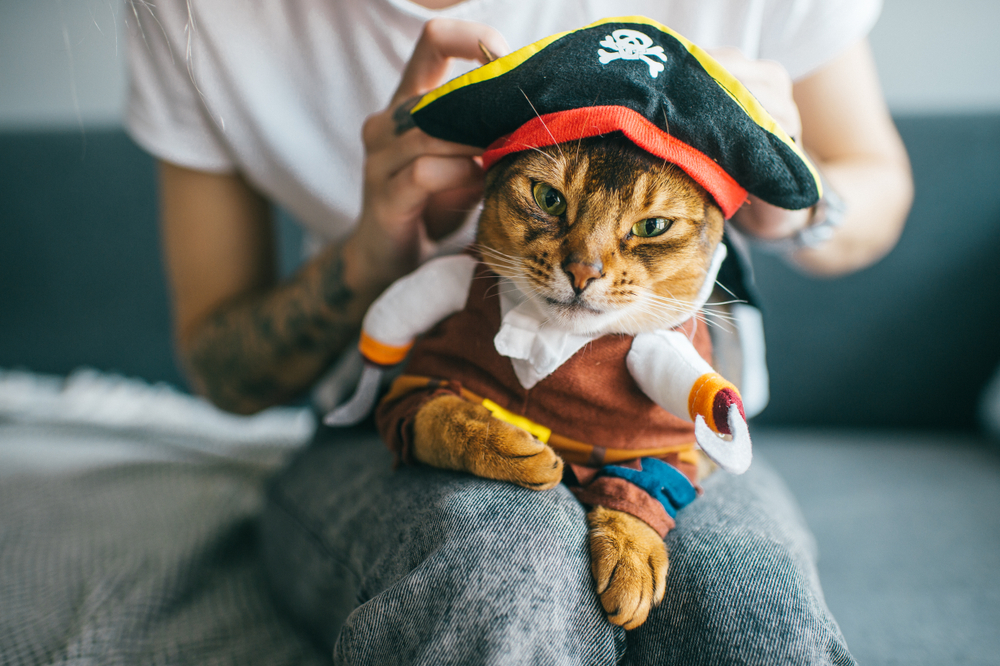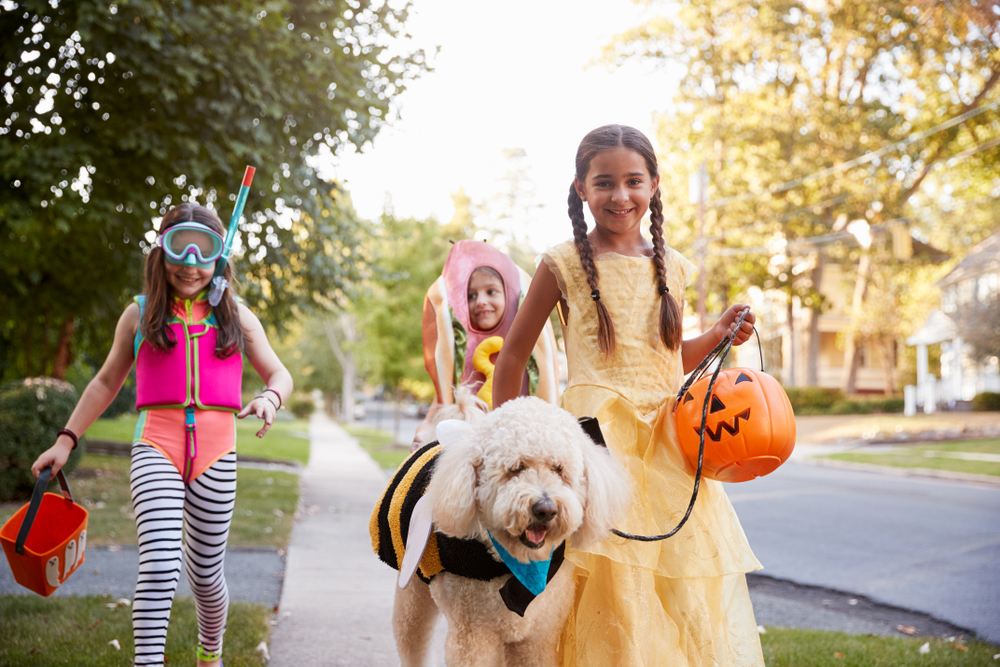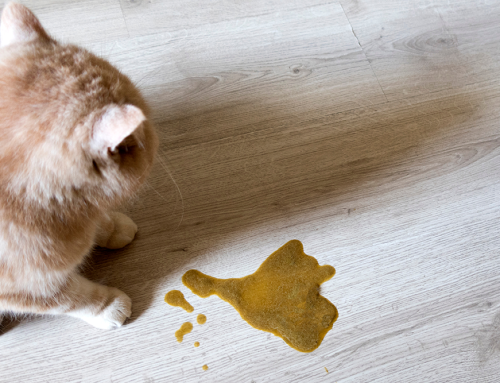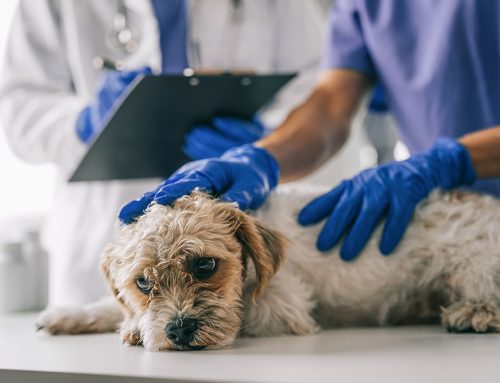Whether you go all out dressing up for a Halloween party or you prefer to stay in and watch scary movies, the ghoulish holiday can present many dangers for your four-legged friend. Our Wellness Animal Hospital team wants you and your furry pal to enjoy the howliday, so we offer Halloween pet safety do’s and don’ts.
DO keep your pet inside on Halloween
Many people use Halloween as an excuse to get rowdy, and your pet could be a target if they are outside. Black cats are especially susceptible to Halloween-associated attacks. Tips to ensure your pet stays inside and safe when the ghouls and goblins are running amok include:
- Walk your pet early — Walk your pet early before trick-or-treaters hit the streets and shenanigans start.
- Keep your pet confined — Keep your pet in their crate or an interior room to help ensure they don’t escape through an open door.
- Post reminders — Post notes on your doors when you host a party to remind yourself and your guests to watch for your pet when they enter and leave the house.
- Secure your doors and windows — If you leave your pet at home on Halloween, ensure your doors and windows are secure so they can’t escape.
DON’T let your pet go unidentified
Regardless of your best intentions, your pet may still sneak out and get lost. Ensure they are properly identified to increase your chances of a reunion if they run away. The best identification is a microchip. Microchipping is a simple procedure that allows veterinary professionals and shelter workers to scan your pet and find your contact information, so they can quickly notify you if your pet is found. In addition, your pet should always wear a collar and identification tags that have your current, legible contact information and are securely attached to their collar.
DO protect your pet from Halloween decorations
Halloween decorations seem to get crazier every year, and some can be dangerous for your pet. Potentially hazardous decorations include:
- Animated decorations — Motion-activated decorations that suddenly move can scare your pet and they may bolt or turn aggressive.
- Candles — Lit candles can burn your pet’s curious nose or paw or present a fire hazard if knocked over.
- Jack-o’-lanterns — Pumpkins aren’t toxic to pets, but eating too much can cause a gastrointestinal (GI) upset.
- Electric-powered decorations — Some pets enjoy chewing on electrical cords, which can lead to a shock or a fire, so keep all electrical cords hidden.
- Dry ice — Dry ice creates a great spooky atmosphere, but can irritate your curious pet’s skin or eyes.
- Glow sticks — If your pet chews open a glow stick, the inside material can irritate their mouth or cause a GI upset.
DON’T let your pet near the candy bowl
Candy may be your favorite part of Halloween, but keep the sweet treats out of your pet’s paws. Concerns include:
- Candy wrappers — In your pet’s haste to ingest as many treats as possible, they may also ingest plastic and foil wrappers, which can cause a GI obstruction that may require surgery.
- Chocolate — Chocolate tops the list of many people’s favorite Halloween candy, but the delectable treat contains theobromine and caffeine, which are toxic to pets and cause signs such as vomiting, diarrhea, restlessness, and elevated heart rate. The darker the chocolate, the more severe the toxicity.
- Xylitol — Xylitol is an ingredient found in many sugar-free candies and gum that is extremely dangerous for pets. The ingredient causes severe hypoglycemia, leading to weakness, incoordination, collapse, and seizures, and liver failure in some pets.
- Macadamia nuts — Macadamia nuts, which are sometimes found in cookies and chocolate candies, contain an unknown toxin that causes weakness, vomiting, incoordination, and hyperthermia in pets.
- Raisins — Handing out raisins on Halloween is cruel for kids, but don’t let them give their cast-off raisins to your pet, because they can cause kidney failure.
DO address your pet’s Halloween-related stress
Some pets experience stress and anxiety because of the constantly ringing doorbells, people dressed in scary costumes, and loud shouts and laughter from passing revelers. If your pet is stress-prone, take steps to keep them calm. Tips include:
- Playing music — Play music or leave the television playing to mask outdoor noise.
- Providing a food puzzle toy — Give your pet a food puzzle toy to help distract them.
- Leaving the candy bowl outside — Leave the candy bowl outside with a note asking trick-or-treaters not to ring the doorbell.
- Leaving the light off — If your pet is especially anxious, leave the light off so trick-or-treaters won’t come to your door.
- Asking for help — Some pets benefit from a sedative or anti-anxiety medication. Ask our Wellness Animal Hospital team if your pet is a good candidate.
DON’T force your pet into a Halloween costume

Pets in Halloween costumes are adorable and can garner many likes on your social media sites, but never force your pet to wear a costume that makes them uncomfortable or anxious. If your pet is amenable to being dressed up like a hot dog or a bumblebee, ensure the costume is safe with these tips:
- Remove potentially ingestible pieces — Your pet may chew on their costume’s adornments and experience a GI obstruction, so remove any pieces they could ingest.
- Ensure the costume fits — Ensure your pet’s costume fits properly and doesn’t impede movement or the ability to breathe.
- Give them time to adjust — Dress your pet several days before Halloween and let them wear the costume for a short time. Gradually increase the time they spend in the costume over several days, so they are comfortable for their holiday debut.
Contact our Wellness Animal Hospital team if you want your pet microchipped before the ghoulish howliday.







Leave A Comment